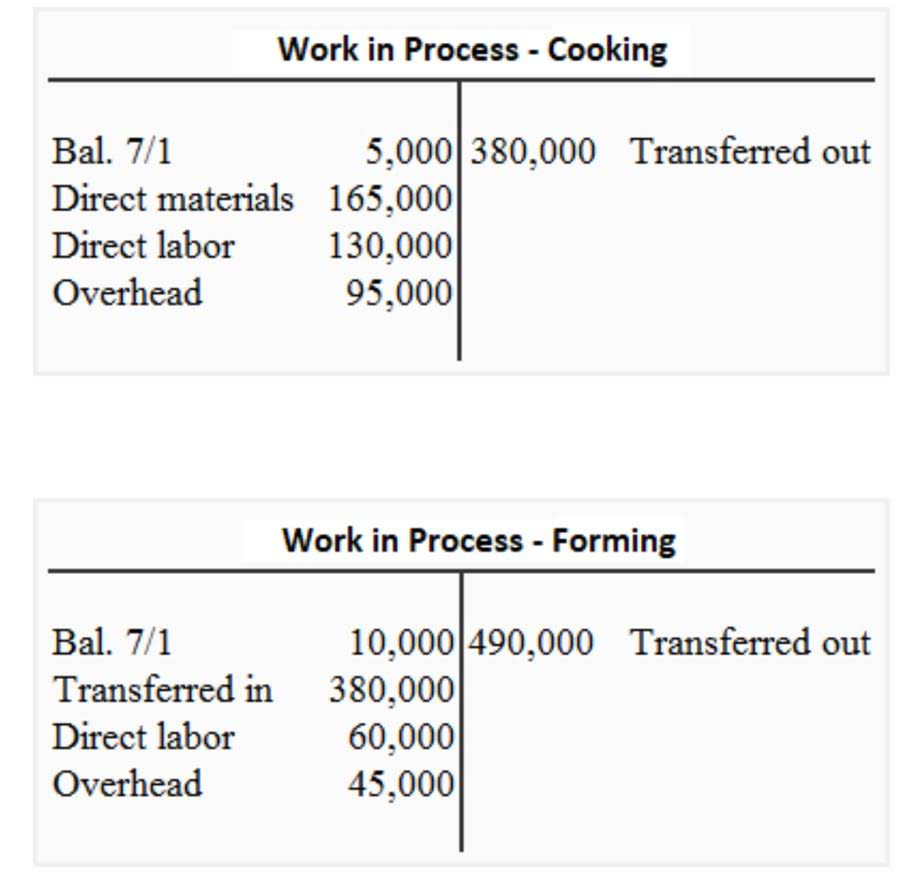A normal balance is the side of the T-account where the balance is normally found. When an amount is accounted for on its normal balance side, it increases that account. On the contrary, when an amount is accounted for on the opposite side of its normal balance, it decreases that amount. Now, let’s move on to discussing the concept of normalizing entries in accounting. This concept is called the separate entity concept because the business is considered an entity separate and apart from its owner(s).
Which Accounts Have a Normal Debit Balance? Which Accounts Have a Normal Credit Balance?
Here are a few of the principles, assumptions, and concepts that provide guidance in developing GAAP. As illustrated in this chapter, the starting point for either FASB or IASB in creating accounting standards, or principles, is the conceptual framework. Both FASB and IASB cover the same topics in their frameworks, and the two frameworks are similar. The conceptual framework helps in the standard-setting process by creating the foundation on which those standards should be based.
Contra accounts
Equity (what a company owes to its owner(s)) is on the right side of the Accounting Equation. Liabilities (what a company owes to third parties like vendors or banks) are on the right side of the Accounting Equation.
- So, anything that increases the Owner’s Equity will also have a credit normal balance.
- By storing these, accountants are able to monitor the movements in cash as well as it’s current balance.
- By following the expected normal balances, accountants can ensure that the financial statements accurately represent the financial position, performance, and cash flows of the business.
- Though there are many similarities between the conceptual framework under US GAAP and IFRS, these similar foundations result in different standards and/or different interpretations.
Let’s Walkthrough Some Examples on Normal Balances of Accounts
Expenses normally have debit balances that are increased with a debit entry. Since expenses are usually increasing, think “debit” when expenses are incurred. Lastly, we discussed the concept of normalizing entries in accounting, which involve adjustments made to financial records to remove abnormal or non-recurring transactions or events. Normalizing entries help provide a more accurate picture of a business’s ongoing operations, correcting for one-time events, seasonal fluctuations, extraordinary items, and accounting errors. The basic components of even the simplest accounting system are accounts and a general ledger. An account is a record showing increases and decreases to assets, liabilities, and equity—the basic components found in the accounting equation.
How to Know What to Debit and What to Credit in Accounting
It is determined by the nature of an account in the chart of accounts under the double-entry bookkeeping system. Forecasting, on the other hand, uses normal balances to estimate the financial outcomes of various scenarios. By applying expected transactions to the normal balances of accounts, financial professionals can simulate the effects of business decisions on the company’s financial trajectory. This forward-looking approach is instrumental in strategic planning and risk management, as it allows businesses to prepare for potential financial challenges and opportunities.
How to Analyze Accounting Transactions, Part One
In this case, there might be an error or other issue that requires an urgent investigation.Keep in mind that if an account is usually a debit one, any debit entry increases the balance. If an account is usually credit, any credit entry increases the balance. Therefore, it’s so important to make only the right entries, as they influence the balance directly. If they’re filled out incorrectly, the company will eventually suffer inevitable losses. Make sure to check what the normal balance should be for each particular account type as often as possible. A normal balance is the expectation that a particular type of account will have either a debit or a credit balance based on its classification within the chart of accounts.
Because of the impact on Equity (it increases), we assign a Normal Credit Balance. We will apply these rules and practice some more when we get to the actual recording process in later lessons. This graphic representation of a general ledger account is known as a T-account. An allowance granted to a customer who had purchased merchandise with a pricing error or other problem not involving the return of goods.
This can be a net debit balance when the total debits are greater, or a net credit balance when the total credits are greater. By convention, one of these is the normal balance type for each account according to its category. In the case of a contra account, however, the normal balance convention is reversed and what is the difference between vertical analysis and horizontal analysis a normal balance is reported either as a negative number, or alongside its parent balance as an amount subtracted. Expense accounts are used to record the consumption of assets or services that are necessary to generate revenue. These accounts typically have a debit balance because expenses decrease equity.
This becomes easier to understand as you become familiar with the normal balance of an account. The significance of these balances extends beyond mere record-keeping; they are essential in painting a true picture of a company’s financial position. Missteps in this area can lead to distorted financial statements, misinformed decisions, and potential compliance issues with accounting standards. Temporary accounts (or nominal accounts) include all of the revenue accounts, expense accounts, the owner’s drawing account, and the income summary account.
We’ve covered these in our prior lessons but we need to keep drilling these into your knowledge if you are just starting out. For this reason the account balance for items on the left hand side of the equation is normally a debit and the account balance for items on the right side of the equation is normally a credit. This is because gain and revenue accounts https://www.adprun.net/ normally have a positive account balance. When a payment is made, the credit entry is recorded on the left side and the debit entry is recorded on the right side. This means that when invoices are received from suppliers, the accounts payable account is credited, and when payments are made to suppliers, the accounts payable account is debited.
Since the service was performed at the same time as the cash was received, the revenue account Service Revenues is credited, thus increasing its account balance. The exceptions to this rule are the accounts Sales Returns, Sales Allowances, and Sales Discounts—these accounts have debit balances because they are reductions to sales. Accounts with balances that are the opposite of the normal balance are called contra accounts; hence contra revenue accounts will have debit balances.
When creating a budget, accountants project the expected debits and credits for each account, based on historical data and anticipated business activities. This projection helps in setting financial targets and establishing benchmarks for performance evaluation. Revenue accounts track the income a company earns from its normal business operations, such as sales of goods or services. These accounts generally carry a credit balance, as revenues increase equity.
For example, the accounts receivable account will usually have a positive balance. The terms “credit balance” and “debit balance” are often used interchangeably. The key to understanding how accounting works is to understand the concept of Normal Balances. In order for companies to record the myriad of transactions they have each year, there is a need for a simple but detailed system.
Nonetheless, it may happen that a debit account has a credit balance as well. It varies from the bookkeeping entries and all possible errors that occur from time to time.That is why the main advantage of knowing the normal balance is that particular measures can be taken when necessary. As a rule, one of the major indicators that something goes wrong is the fact that an account has an abnormal balance, which is the opposite of the normal one.
Double-entry bookkeeping is a systematic method for recording financial transactions that requires each entry to have corresponding and opposite effects on at least two different accounts. This method enhances the reliability of financial information, providing a balanced view of a company’s transactions. Under the accrual basis of accounting the account Supplies Expense reports the amount of supplies that were used during the time interval indicated in the heading of the income statement. Supplies that are on hand (unused) at the balance sheet date are reported in the current asset account Supplies or Supplies on Hand. Insurance Expense, Wages Expense, Advertising Expense, Interest Expense are expenses matched with the period of time in the heading of the income statement.
A T-account is called a “T-account” because it looks like a “T,” as you can see with the T-account shown here. An increase in expenses and losses will cause a decrease in cash flow from operations because more cash is going out than coming in. While expense and loss accounts typically have a negative account balance. When we talk about the “normal balance” of an account, we’re referring to the side of the ledger.
According to the separate entity concept, Lynn may record the purchase of the car used by the company in the company’s accounting records, but not the car for personal use. The primary exceptions to this historical cost treatment, at this time, are financial instruments, such as stocks and bonds, which might be recorded at their fair market value. For example, Lynn Sanders owns a small printing company, Printing Plus. The customer did not pay cash for the service at that time and was billed for the service, paying at a later date. When should Lynn recognize the revenue, on August 10 or at the later payment date?
It is a fundamental concept in accounting that helps ensure accuracy and consistency in financial reporting. Understanding the normal balance of accounts is essential for recording transactions and preparing financial statements. Ideally, all the above-mentioned account types should have a normal balance as stated.





